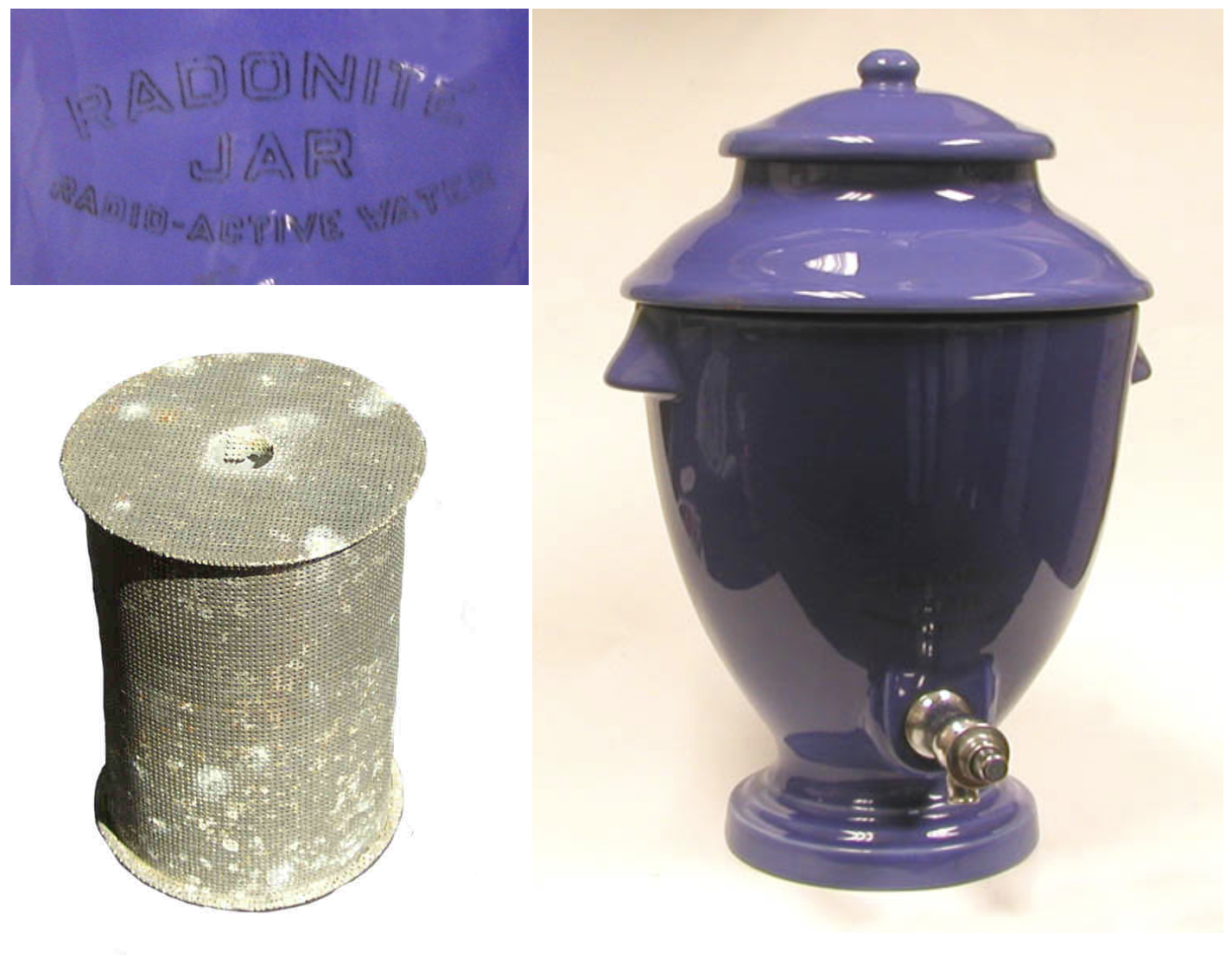Radonite Jar (early 1930s)

The Radonite Jar is as pretty a quack cure as you are likely to find. It was designed to add radioactivity to ordinary drinking water which would be poured into the top. After some recommended time (e.g., 12 hours), the water would be infused with radioactive radon-222 that was produced by the decay of radium-226. The source of the radium-226 was a tan-colored granular material kept inside a cylindrical container (photo above left) located in the bottom half of the jar.
The only text on the jar consists of "Radonite Jar" and "Radioactive Water." Unfortunately, these words are stamped in a black lettering that is difficult to make out in the photo.
The jar was produced by the Radonite Corporation whose products, described in the 1932 Official Gazette of the United States Patent Office, were "Radio-active water jars and containers and emanation infusers, etc."
The company's incorporation in 1932 was was managed by the Corporation Guarantee and Trust Company in Philadelphia, but the actual principals in the company are not known.
Mike Hentz, whose grandfather sold these jars, has an original shipping container. The address from which the box was shipped was:
T.P. Co. 6
Trenton, New Jersey
The "T.P. Co." indicates that the Radonite Jar was produced by the Trenton Potteries Company, an amalgamation of several distinct operations. The one that actually made the jar is identified by the number 6: the Ideal Pottery Company. The latter was located on the corner of North Clinton Avenue and Ott Street.
I assume that the radium emanator was installed by the pottery company, but this is not certain. Nevertheless, it is a safe bet that the emanator was produced locally—radium was readily available in New Jersey.
The address to which the box was being shipped is also interesting:
Mountain Valley Water Company
127 (?) W. Central Parkway
Cincinnati, Ohio.
At one time, the Mountain Valley Company promoted its water as being radioactive. It wasn't, at least any more radioactive than ordinary water.
Size: Jar ca. 14" high, 9" diameter at widest point
Exposure rates: ca. 10 uR/hr above background at one foot from the side of the jar
Reference
Mike Hentz, personal communication. Mike also provided the source and source photo.
